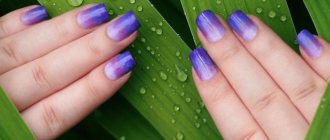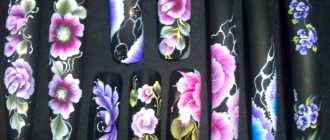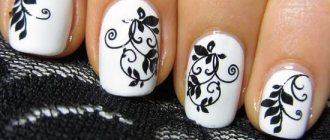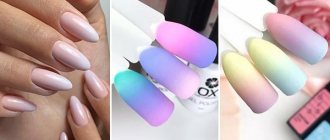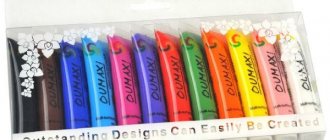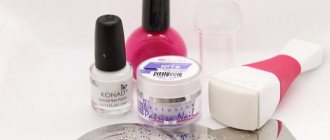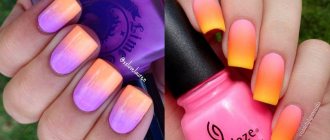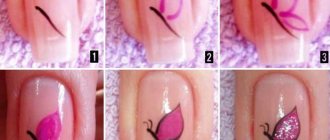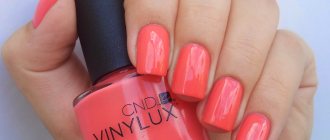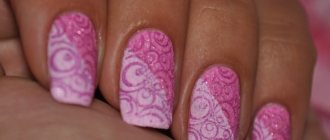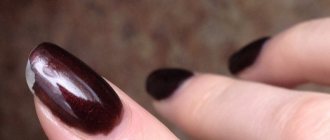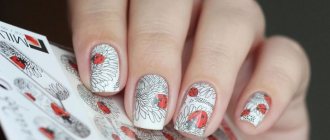Now there are many ways to decorate your nails and apply unusual designs to them that are suitable for everyday life and will also look great at a celebration. One of these options is stamping, which girls quite often do for themselves, due to the simplicity of the technology.
Most often, the procedure is done with regular varnish, but to extend the life of the work, you can also use gel polish. But be careful - before polymerizing it, you should pay attention to the quality of the finished coating.
What is stamping
Stamping, from English. Stamping is a technique of applying a design to nails through a stencil using a special stamp. The whole point of the technique is to fill the pattern engraved on the plate with paint and then imprint it on the nail plate.
In order to transfer a design to a nail, you need:
- Apply paint to the desired pattern;
- Print it on a stamp;
- Transfer from the stamp to the nail.
To create a design you need:
- A stencil is a plate with a pattern extruded on its surface, which is filled with paint and transferred to the nail;
- Stamp – a silicone or rubber pad with a handle for imprinting a pattern from a stencil;
- A scraper or scraper is a plastic tool for removing excess paint from the surface of a stencil plate.
Am I applying paint to the plate correctly?
Everywhere in the educational video materials, stamping paint is applied differently to the engraved pattern on the stamping plate: sometimes they just brush it with a varnish brush along the edge of the pattern, and sometimes they paint over the entire pattern.
My photo
Which is correct?
There is no definite answer to this question - it all depends on the density, consistency and saturation of a particular stamping paint (and there are so many of them nowadays, a wide choice!).
But the main thing is that no matter how much paint you initially apply to the plate, there should be just enough paint so that when using a special scraper, all the paint evenly fills all the voids of the engraved pattern - it is better to have excess paint than a lack of it.
And then, over time, having gained practical experience in stamping, you will purely intuitively understand where and what kind of paint can be applied more (thick paint on a pattern with deep engraving, for example), or vice versa, where less paint (where liquid paint and fine engraving).
All comes with experience
